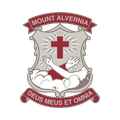Exercise Tips

How are you, folks?
I am hoping you have made some valuable steps towards making exercise your friend after my recent rantings.
In the last article I spoke about a number of things related to starting this thing, including the all-important, finding your Why?' I finished by mentioning a Primal Movement Pattern structure to your workout too, which I will address below.
First I must emphasise that, whilst the following may apply to, and be appropriate for, many of you, it is still very advisable to take advice in person from a health professional before starting any exercise program.
As professionals we ensure that we modify any exercise to suit the level of the client in front of us. It is super important to start from the point for which you are ready.
Now I don’t really want to pick on one group, but I think this vulnerable bunch needs a special call out, specifically for safety reasons. It is thus aimed directly at the dads out there, and particularly those who may have recently found themselves uttering the immortal words, “I used to be able to do,….,x, y, z”. Statements and stories like that are great, but they never fail to trigger in my head the tune made famous by Bruce Springsteen and his iconic reference to the Glory Days. Whilst those previous achievements may have been grand and super, it is where we are at right now that counts, and the past is the past. I have fallen prey to this particular delusion myself more than once when aiming to re-start or kick my training up a level (too high), so I speak from experience. Another famous line comes to mind at this time too from none other than the legendary cop, Clint Eastwood: “A man’s got to know his limitations". To be clear, I am not saying don’t aim high or don’t have stretch goals; just keep it under control and progressively build from your current reality.
Hopefully I haven’t lost too many of our younger readers here with my dated references to my ‘heroes’ of yesteryear and the focus on what it can be like to age. I’m just saying, watch your dad!
Okay, down to the actual exercises I believe will form a great little routine you can do from home, or anywhere for that matter. In most cases you can get away with no real external load, but any way you can make it more challenging (as you become better) is a way to progress the body.
There is an over-arching rule to fitness training and it is that progressive overload is needed for an organism to adapt and build. Just think of this. If all you ever did was lift a pen, would you get a stronger arm? The answer is no, because it is not heavy enough to ask your muscle to adapt. So it needs to be challenging but not so challenging you hurt yourself. A good rule of thumb is that, if you are starting out, aim for an exercise that you can do maybe 15-20 times before it gets tough. This higher repetition range means the loading should be about right for the beginning exerciser.
So here is a sample workout and the exercises.
Always warm up. We use foam rolling to encourage blood flow to muscles. This could be a whole article unto itself. Suffice to say, it is a gentle way to start the body moving gradually in preparation for larger and stronger movements. We also use trigger balls in the warm-up process, but they are a little more specialised. You could by pass all this and just go for a brisk walk to have your body ready for a workout. Sometimes just keeping it simple is the smartest way to go.
As a way to really help fire the right muscles, we always do a core and glute activation routine. Again, this is pretty specialised but a great way to ensure the right muscles start working because both the core and glutes are notorious for being ‘'switched off' in the average person, due to the crazy amount of time we spend seated.
So what is the core and how do we 'fire it up'? Imagine you are putting on a tight pair of jeans and pulling them up high. The first reaction is to draw the stomach in, right? That movement is activating the deep muscles around the spine, aka the core. These muscles are critical for stabilising your spine in exercise, which improves the safety of any movement. Now what about those glutes? Lay down on your back and keep your feet on the ground and bend your knees up. Next raise your hips up forming a straight line ensuring you keep the feet on the ground and push and focus your weight into your heels. If you do this enough times you should start to feel the muscles in your butt (glutes). Make sure you don’t raise your hips so high that you arch your lower back.
Once core and glute muscles feel like they are working, you are ready to go ….
I will mention three levels for each exercise starting with less challenging first.
Squat:
- Level 1. Hold on to something solid and squat down.
- Level 2. Free squat. Hands and arms straight out in front providing a helpful counter balance.
- Level 3. Hold a load in front of the chest, to the chest. We call this the goblet squat.
Push Up:
- Level 1. Horizontal push up - off the wall. More of a ‘push out’.
- Level 2. Laying down, up on knees, straight line from back of head to middle of back to glutes.
- Level 3. Same alignment but off the feet.
Lunge:
- Level 1. Hold on to something solid and kneel down on to one knee (let touch the floor) and then push up off ground with front leg.
- Level 2. Hold on to something less solid like a broom and do the same movement to the ground and back up.
- Level 3. Do free without assistance and hover off the ground with the back leg (don’t let touch the ground). Add load if needing even more challenge but, trust me, lunges are hard!
Rowing or Reverse Fly Movement:
- Level 1. Bend over from the waist, knees soft, back straight, elbows bent to 90 degrees, pull arms back initiating the move from the shoulder blades. Keep chin tucked. Feel like the shoulder blades are coming together. Hold for three seconds. Repeat. This is a fly.
- Level 2. Same bent-over position from 1; but, this time, elbows close and pull up the elbows from this bent-over position with some kind of load in the hands. This is a row.
- Level 3. Same as 2, but just add more challenging load.
Hip Hinge:
- Level 1. This is one to practise in front of a mirror. It is the base move for the all-important deadlift. Hold a stick on your back touching your head, the middle of your back, and your glutes. Bend over from the waist. Don’t let the stick come off your back. The point at which it wants to come off your back is the extent of the move for you. The driving muscles of this move are the hamstrings, lower back, and the glutes. Let’s not progress this one unless you have someone teach you in person. It’s an important move for back strength but, done incorrectly, will hurt your back.
Loaded Carry:
- Level 1. This is a great exercise for leg strength and core control. Think of a farmer carrying two heavy buckets. That is a loaded carry. So, with this exercise, you do need some load. It can be varied by holding different loads in each hand in different positions. The idea is to challenge your balance and control as you walk. It is perfect for building a good base level of strength useful for all the other exercises. Choose a load that is controllable but challenging. Just think about carry shopping bags and how important it is to be able to handle that wi
Overhead Press:
- Level 1. If you do end up getting some bands as per above, you can use these for this move too by standing on the band and pushing up overhead. However, because this move is such a biomechanically hard one (the human body is not constructed in a way that is particularly conducive to this action), even holding on to cans of soup and raising above the head could be enough. The important part of this move is to make sure you keep the core switched on because, as this gets tough, there is a tendency to lean back and kind of hang off the lower back joint. You don’t want this. The target muscles here are in the shoulder joint and, yes, when done right, keeps the rest of the body working in synchronicity as well.
Alternate Super Person:
- Level 1. This is a lying face-down move again. Both arms and legs are outstretched in the superwoman position. Make sure to tilt head so your forehead is on the ground, leaving space to breathe. It also helps protect the neck in that position. You raise the arm and the opposite leg off the ground at the same time. Don’t try to take the leg off the ground so high that you arch your lower back. This is a glute exercise and a back of the shoulder move. No need to overload this one with extra weight. It is more of a mobility and muscle endurance thing.
I know images would have been easier, but sometimes reading this really helps with some of the intricacies of what to feel and how. But, if you have any questions, please feel free to reach out!
Anthony Gillespie, BSp Sc, BSc Psych Hons
Ph 3854 0386

